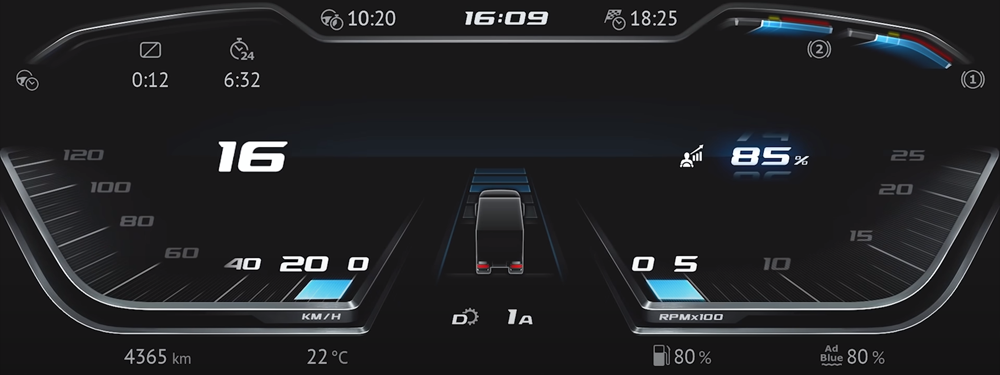DAF Trucks Digital Display
Digital Dashboard for European Commercial Vehicles
For this project, I was put in charge of a team with minimal UI implementation experience. I quickly realized that I needed to train them on best practices for UI development. Our job was to refactor what had already been developed for performance improvements while continuing to develop the remaining features for the display. Ultimately reduced project size by over 323%, VRAM consumption by 345% and improved FPS by 233-275%.
Only portions of this project are currently open to the public.
Overview
Problem: Display was running at inoperable framerates with an unacceptable startup time. I was put in charge of refactoring the project in addition to building previously undeveloped features.
Platform: DAF Brand Commercial Trucks
Process: Redesign and Rebuild Project Architecture, Identify and Create Reusable Components, Build Features
Tools: Kanzi Graphics Engine, C++, Illustrator, Photoshop, Blender
My Role:
- Led effort to identify performance and workflow inefficiencies for software and team
- Mentored team of up to five developers, delegated tasks and led code reviews
- Integrated substantial features including turn-by-turn, right-to-left localization, media player and ADAS UI
Project Goals
1. Improve Software Performance by Refactoring Project
2. Add Features Without Disrupting Performance Improvement Effort
3. Improve Development Pipeline Inefficiency
Improve Software Performance by Refactoring Project
Goals: Refactor project in order to reduce total project size, ram/vram consumption and improve FPS.

Despite consistently adding new feature content, we hit the following improvement milestones:
- Reduced project size by over 323%.
- Reduced VRAM consumption by over 345%.
- Improved FPS by 233-275%.
Add Features Without Disrupting Performance Improvement Effort
Goals: Continuously add new feature content without disruption from refactoring.

Among other things, this involved nearly doubling the content within the menu. I primarily handled all of the menu related feature work myself in order to provide the people on my team an architectural blueprint for future menu related refactoring.
Improve Development Pipeline Inefficiency
Goals: Overhaul primary project architecture to support better testing and debugging.
Soon after being put on this project, I identified that it had been set up in a way that increased development testing time significantly. One of my first efforts was to create a new project setup that streamlined the steps involved in testing feature work.